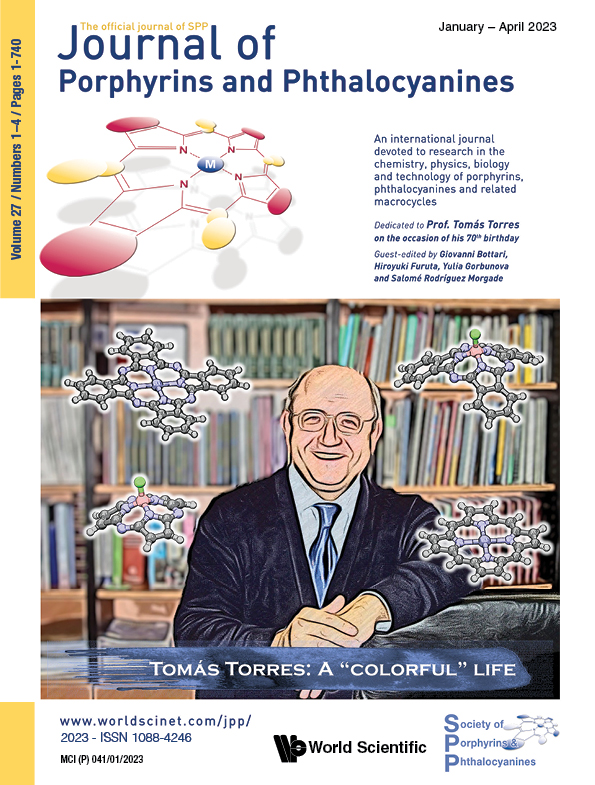Why can cobalt(III) corrole form more stable metal/ organic interfaces than cobalt(II) porphyrin?
Abstract
The ring size of tetrapyrrole ligands can dramatically influence the interfacial interactions of their metal complexes, as was found in a comparison of alkyl-substituted cobalt(II) porphyrins and cobalt(III) corroles adsorbed on a Ag(111) surface. The electronic properties of interfaces of both metal complexes were studied using photoelectron spectroscopy (XPS, UPS) and scanning tunneling microscopy (STM) in the monolayer and multilayer regimes. In the respective multilayers, the surface-decoupled complexes comprise paramagnetic cobalt centers, as indicated by the Co 2p core-level spectra. In the monolayers, both complexes are chemisorbed and engage in charge transfer at the interface. Consequently, the former singly occupied orbitals at the cobalt centers accept electron density from the Ag(111) surface. As a result, the cobalt centers of both complexes are reduced. Despite these similarities, there are substantial differences in the overall interaction strength: a much stronger interaction was observed in the case of the corrole complex, for which the interfacial charge transfer is not limited to the cobalt states, but also involves the ligand’s π-electron system. Density functional theory (DFT) calculations of the corresponding parent macrocycles reveal that, in comparison with the porphyrin, the corrole exhibits increased adsorption energy, a reduced adsorption height, and undergoes a stronger interfacial charge transfer. The increased stability of the corrole/ metal interface is attributed to the corrole ligand’s open-shell character with delocalized π-electron spin density and the resulting stabilization by rearomatization-driven electron transfer.

Dedicated to Prof. Tomás Torres on the occasion of his 70th birthday
Handbook of Porphyrin Science now available in 46 volumes


